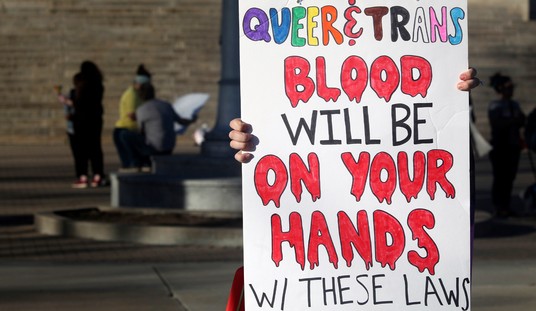
(Photo by Shutterstock.com.)
“Guggenheim accused of racism after high school kids are booted,” the New York Post reports, complete with the horrible pun, right in the lede that “It’s a Guggen-crime:”
The Upper East Side museum banned a Brooklyn high school for life after its students were deemed too rowdy on a recent visit — a move that some call discipline and others discrimination.
A group of about 80 kids from Downtown Brooklyn’s Science Skills Center HS were kicked out after just 20 minutes after a student allegedly spat off the museum’s swirling rotunda lobby and another threw a penny off its winding walkway. The coin was rumored to have hit a security guard.
It was only a handful of troublemakers, but the whole group of ninth- and 10-graders got the boot, with the museum forcing them to wait outside for an hour for their bus to arrive.
Many never got to glimpse the gallery’s Picassos, van Goghs and Monets or even finish checking out the main display by Japanese artist On Kawara.
“I thought, if anything, they [museum staff] should just tell the teachers to control the children more and let us finish the exhibit, but they didn’t even do that. They just kicked us out,” said student Yosmeris Martinez, 14, from East New York.
Shortly afterward, the school was told it was not welcome back.
Just last week, First Lady Michelle Obama pleaded for art institutions to be more welcoming of kids from all backgrounds.
Naturally, because of the timing of that rant by “the first lady of microaggressions,” the uber-leftists at the Guggenheim were immediately accused of the macro-aggression of raaaaacism, as the left continues its process of slowly devouring itself. Likely as a result of all of the bad press, the museum very quickly recanted its ban. But for anyone with even a cursory knowledge of the birth of modern art, the whole incident has a Strangelove-esque, “You can’t tussle here, this is a modern art museum!” feel to it.
To understand why, recall what Tom Wolfe wrote in his classic essay on “The Great Relearning,” from his 2000 Hooking Up anthology, and its leitmotif of “Starting from zero.”
As Wolfe noted, while on a field trip to the west coast as a reporter in 1968, he “came across a curious footnote to the hippie movement” at the Haight-Ashbury Free Clinic, where doctors were treating “diseases that had disappeared so long ago they had never even picked up Latin names, diseases such as the mange, the grunge, the itch, the twitch, the thrush, the scroll, the rot.” They had reappeared thanks to the hippie movement’s mass communal living and “free love:”
The hippies sought nothing less than to sweep aside all codes and restraints of the past and start out from zero. At one point the novelist Ken Kesey, leader of a commune called the Merry Pranksters, organized a pilgrimage to Stonehenge with the idea of returning to Anglo-Saxon civilization’s point zero, which he figured was Stonehenge, and heading out all over again to do it better. Among the codes and restraints that people in the communes swept aside—quite purposely—were those that said you shouldn’t use other people’s toothbrushes or sleep on other people’s mattresses without changing the sheets or, as was more likely, without using any sheets at all, or that you and five other people shouldn’t drink from the same bottle of Shasta or take tokes from the same cigarette. And now, in 1968, they were relearning . . . the laws of hygiene . . . by getting the mange, the grunge, the itch, the twitch, the thrush, the scroff, the rot.
This process, namely the relearning—following a Promethean and unprecedented start from zero—seems to me to be the leitmotif of the twenty-first century in America. “Start from zero” was the slogan of the Bauhaus School. The story of how the Bauhaus, a tiny artists’ movement in Germany in the 1920s, swept aside the architectural styles of the past and created the glass-box face of the modern American city during the twentieth century is a familiar one, and I won’t retell it. But I should mention the soaring spiritual exuberance with which the movement began, the passionate conviction of the Bauhaus’s leader, Walter Gropius, that by starting from zero in architecture and design man could free himself from the dead hand of the past. By the late 1970s, however, architects themselves were beginning to complain of the dead hand of the Bauhaus: the flat roofs, which leaked from rain and collapsed from snow; the tiny bare beige office cubicles, which made workers feel like component parts; the glass walls, which let in too much heat, too much cold, too much glare, and no air at all. The relearning is now under way in earnest. The architects are busy rummaging about in what the artist Richard Merkin calls the Big Closet. Inside the Big Closet, in promiscuous heaps, are the abandoned styles of the past. The current favorite rediscoveries: Classical, Georgian, Secession, and Moderne (Art Deco). Relearning on the wing, the architects are off on a binge of eclecticism comparable to the Victorian period’s 125 years ago.
As Wolfe noted, “In politics the twentieth century’s great start from zero was one-party socialism, also known as Communism or Marxism-Leninism,” which Barack Obama’s parents and other early influences were very much in favor of, and which invariably lead to the Gulag.
But while international socialist Russia and later national socialist Germany were getting an education in the ultimate definition of conformity, in the west, modern artists were casting off old rules — starting from zero — and specializing in the notion of épater les bourgeois — shocking the bourgeois. That style of art began with Marcel Duchamp’s urinal — and as seen in the photos of say, Robert Mapplethorpe in the 1970s and ’80s, or Andres Serrano’s infamous “Piss Christ” never left the men’s room. In his G-File last week, Jonah Goldberg wrote, “back in the ’80s and ’90s, the whole point of subsidizing art was to pay for stuff that offended, shocked, and stretched the boundaries (and, occasionally, sphincters) of society:”
As is almost always the case, what this actually meant was that it must shock the right kinds of people: bourgeois fuddy-duddies and fusspots, squares, and scriveners, men in gray flannel suits and bible-thumpers of all sorts.
Many on the left still like doing that, of course. But there’s a problem. It turns out that there are lots of people who are even more shockable than white, Christian men and the women who love them. After so many years of the Left focusing on making Uptighty-Whitey blush, social conservatives have grown a pretty thick skin about such mockery. Meanwhile the same feminists who clapped with glee as Karen Finley rubbed chocolate-qua-feces over her body to symbolize the way women are treated — and rushed to her defense when she sued the federal government to pay her to do it — don’t much like it when anybody else says things they don’t like. And unlike conservatives, mainstream liberals have rice-paper thin skin about such things, which is why some think Joss Whedon fled Twitter this week.
(When Finley and the “NEA Four” lost their lawsuit at the Supreme Court, Justice Scalia wrote: “Avant-garde artistes such as respondents remain entirely free to épater les bourgeois; they are merely deprived of the additional satisfaction of having the bourgeoisie taxed to pay for it.” This proved yet again that Scalia is a hoss.)
The notion that certain anointed people have a right not to be offended has spread with the ineluctable logic of a cancer cell. One need only look at the reception Christina Hoff Sommers gets on college campuses to appreciate how times have changed. She gets bodyguards to protect her from physical attacks while the delicate little flowers get “safe spaces” where they are protected from words — facts, actually — they do not like.
And the curators of the Guggeinheim get the vapors when they encounter kids who employ a little épater les bourgeois of their own.
Of course, likely the kids weren’t taught acceptable behavior in school — but again, the early modernists would cheer that as well. In her 1938 manifesto Three Guineas, modernist author Virginia Woolf was succinct in her proposed antidote to existing forms of education: “rags. petrol. matches,” as Theodore Dalrymple wrote in 2002:
Mrs. Woolf’s ideal college—the kind that would prevent rather than promote wars—would not be in any way elitist. It would “not [be] parcelled out into the miserable distinctions of rich and poor, of clever and stupid.” It would, rather, be a place “where all the different degrees and kinds of mind, body and soul met and co-operated.” It would be entirely nonjudgmental, even as to intellect. For her, the urge to compete does not inhere in man’s nature, nor does it result in anything other than violent strife. Henceforth, there is to be no testing oneself against the best, with the possibility, even the likelihood, of failure: instead, one is perpetually to immerse oneself in the tepid bath of self-esteem, mutual congratulation, and benevolence toward all.
Of course, it is a mistake to suppose that a hypothetical future state of perfect toleration means toleration in or of the present: far from it. Mrs. Woolf would not let her opponents, or those who think differently, live in peace: on the page after the last marked by Michel Leiris, she gives full expression to her slash-and-burn concept of cultural renewal: “No guinea of earned money should go to rebuilding the college on the old plan. . . . [T]herefore the guinea should be earmarked ‘Rags. Petrol. Matches.’ And this note should be attached to it. ‘Take this guinea and with it burn the college to the ground. Set fire to the old hypocrisies. Let the light of the burning building scare the nightingales and incarnadine the willows. And let the daughters of educated men dance round the fire and heap armful upon armful of dead leaves upon the flames. And let their mothers lean from the upper windows [before, presumably, being burned to death] and cry “Let it blaze! Let it blaze! For we have done with this education!”’”
What happens when generations take the notion of “starting from zero,” burning all the old forms, and all of the old customs? I’m not sure why the Guggenheim should temporarily banish kids for their boorish behavior — when the people who painted the paintings on the wall of their museum would surely approve of it entirely.










Join the conversation as a VIP Member